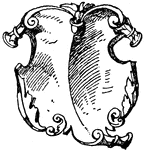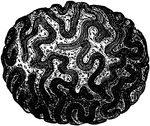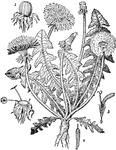
Dandelion
Taraxacum is a large genus of flowering plants in the family Asteraceae. They are native to Europe,…
Lotus Capital
An illustration of a lotus decorated capital. In several traditions of architecture including Classical…
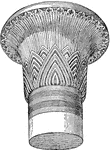
Papyrus Capital
An illustration of a papyrus decorated capital. In several traditions of architecture including Classical…
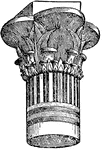
Lotus Capital
An illustration of a lotus decorated capital. In several traditions of architecture including Classical…

Persian Capital
An illustration of a Persian capital. In several traditions of architecture including Classical architecture,…
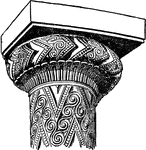
Early Greek Capital
An illustration of an early Greek capital. In several traditions of architecture including Classical…
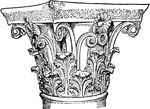
Corinthian Capital
An illustration of a Corithian capital from the Tholos of Epidaurus. In several traditions of architecture…
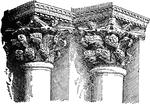
Byzantine Capitals
An illustration of a Byzantine capital from the central portal of St. Mark's Venice. In several traditions…
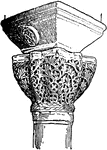
Byzantine Capitals
An illustration of a Byzantine capital from the the Church of St. Vitale, Ravenna. In several traditions…
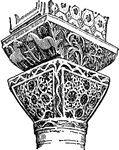
Byzantine Capitals
An illustration of a Byzantine capital from the the Church of St. Vitale, Ravenna. In several traditions…

Cushion Capitals
An illustration of a cushion capital. In several traditions of architecture including Classical architecture,…
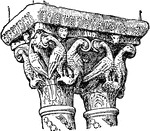
Romanesque Capitals
An illustration of a Romanesque capitals from the cloister of Monreale near Palermo, Sicily. In several…

Gothic Capitals
An illustration of a Gothic capitals from Wells Cathedral. In several traditions of architecture including…
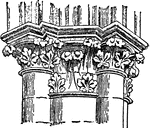
Gothic Capitals
An illustration of a Gothic capitals from from Amiens Cathedral. In several traditions of architecture…
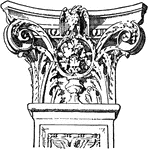
Italian Renaissance Capitals
An illustration of Italian Renaissance capital from St. Maria dei Miracoli, Venice. In several traditions…

Thoracic Duct
"Human Thoracic Duct and Azygous Veins. a, receptacle of the chyle; b, trunk of the thoracic duct, opening…

Wels Catfish
The wels catfish is a scaleless fresh and brackish water catfish recognizable by its broad, flat head…

Cephalopod
The cephalopods are the mollusk class Cephalopoda characterized by bilateral body symmetry, a prominent…
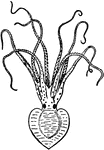
Pinnoctopus Cordiformis
An illustration of pinnoctopus cordiformis, a type of cephalopods. The cephalopods are the mollusc class…

Entrance Façade of Diocletian's Palace
"Fragment of the Entrance-Façade of the Palace of Diocletian at Spalatro. The tendency of the…
Remora
The remora (Echeneis remora) is a sucking fish with a flat disk on its head it uses to stick to larger…
Tapeworm
Echinobothrium typus is a species of tapeworm distinguished by two fossettes with hooks on its head.

Electric Eel
The Electric Eel (Electrophorus electricus) is a fish in the Gymnotidae family of naked-back knifefishes.

Long-Horned Beetle
"Elaphidion parallelum ... a, larva; b, twig split open, showing inclosed pupa; k, severed end of twig;…
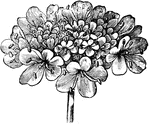
Inflorescence of Field Scabious
An illustration of the inflorescence of the field scabious. Knautia arvensis, commonly known as Field…
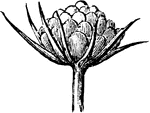
Young Inflorescence of Field Scabious
An illustration of the young inflorescence of the field scabious. Knautia arvensis, commonly known as…

Ray-floret of Field Scabious
An illustration of a ray-floret of the field scabious. Knautia arvensis, commonly known as Field Scabious,…

Ray-floret of Field Scabious
An illustration of a ray-floret of the field scabious. Knautia arvensis, commonly known as Field Scabious,…

Seed of Field Scabious
An illustration of the seed of the field scabious. Knautia arvensis, commonly known as Field Scabious,…
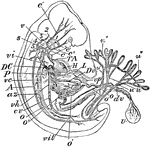
Human Embryo
"Early Human Embryo, giving diagrammatically the principal vessels antecedent to the establishment of…

Encrinite
"Encrinite: head and piece of stem. Any fossil crinoid; a stone-lily: a term especially applied to the…
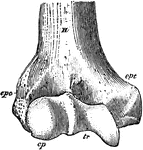
Humerus
"Anterior View, Distal End, of Right Humerus of a Man. H, humerus; epc, epicondyle, or external supracondyloid…
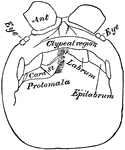
Centipede Head
"Head of Scolopendra, from below, showing the epilabrum, the protomala with its cardo (Card), and stipes…

Epiphyllospermous Frond
"Part of Epiphyllospermous Frond. In botany, bearing the fruit or spores on the back of the leaves or…
Youth Femur
"Right Femur of a Youth. E, E, epiphyses; gtr, ltr, greater and lesser trochanter; h, head; et, it,…
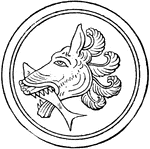
Episemon
Episema were used in Greece as a symbol for a country, region, or used on a shield or badge. This episemon…

Copepod
Also known as fish lice, this is a species of copepod, a parasitic crustacean. "Female of Chondracathus…
!["The Metre Bridge is employed - a piece of apparatus which is illustrated [here]. It consists of a wooden base, upon the upper face of which is mounted a metallic rectangle; three sides of this rectangle are formed by a broad substantial copper band - having a negligible resistance - and the fourth consists of a platinum silver wire w w joining the copper blocks P and p. This wire is exactly one meter long, and over it slides a key K, which when depressed makes contact by means of a platinum knife-edge with the wire; the exact point on the wire at which this contact is made is indicated by an arrow-head on the key, which slides against a scale, as shown." (Britannica, 1891)](https://etc.usf.edu/clipart/61300/61365/61365_metre-bridge_mth.gif)
Metre Bridge
"The Metre Bridge is employed - a piece of apparatus which is illustrated [here]. It consists of a wooden…
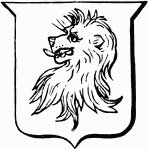
Erased
"A Lion's Head Erased. In heraldry, represented as having been forcibly torn off, the separated parts…

Italian Renaissance Lunette Panel
The Italian Renaissance lunette panel is a semi-circle design found on a door-head.

Wrought-Iron Grill Lunette Panel
Wrought-iron grill lunette panel. Its a semi-circle design typically found on a door-head.

Graeco-Italic Hand-Hydria
This Graeco-Italic hand-hydria is made out of clay and is unpainted. It is smaller and a slenderer hydria…

Graeco-Italic Hand-Hydria
This Graeco-Italic hand-hydria is made out of clay and is unpainted. It is smaller and a slenderer hydria…

Coral Head
Compound coral head with polyps partly expanded and partly contracted. The expanded polyps show the…

Coral Head
A compound coral head with crowded prismatic corallites. The specimen represents a worn pebble, formerly…

Sir Thomas More
Sir Thomas More (7 February 1478 – 6 July 1535) was an English lawyer, author, and statesman who…
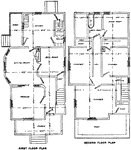
"The Adele" Floor Plans
The blueprints of "The Adele" clearly show the large bay window in the dining area. There is also a…

"The Asbury" Floor Plans
The floor plan of this three story Queen Anne Victorian style house shows the openness of this large…
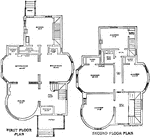
"The Badenoch" Floor Plans
The entrance to this house is labeled a vestibule, to elicit a sense of grandeur. The round tower can…

Irrigating with Furrows
"Irrigating young orchard with furrows. a, sluice; b, head ditch; c, furrow." -Department of Agriculture

Decorative Floral V
An ornate capital V surrounded by leaves and vines, used at the start of a new chapter or heading.

Decorative Floral O
An ornate capital O surrounded by leaves and vines, used at the start of a new chapter or heading.
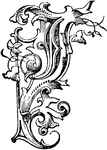
Decorative Floral J
An ornate capital J surrounded by leaves and vines, used at the start of a new chapter or heading.

Decorative Floral W
An ornate capital W surrounded by leaves and vines, used at the start of a new chapter or heading.

